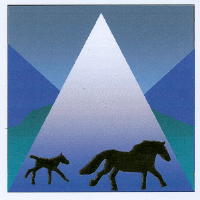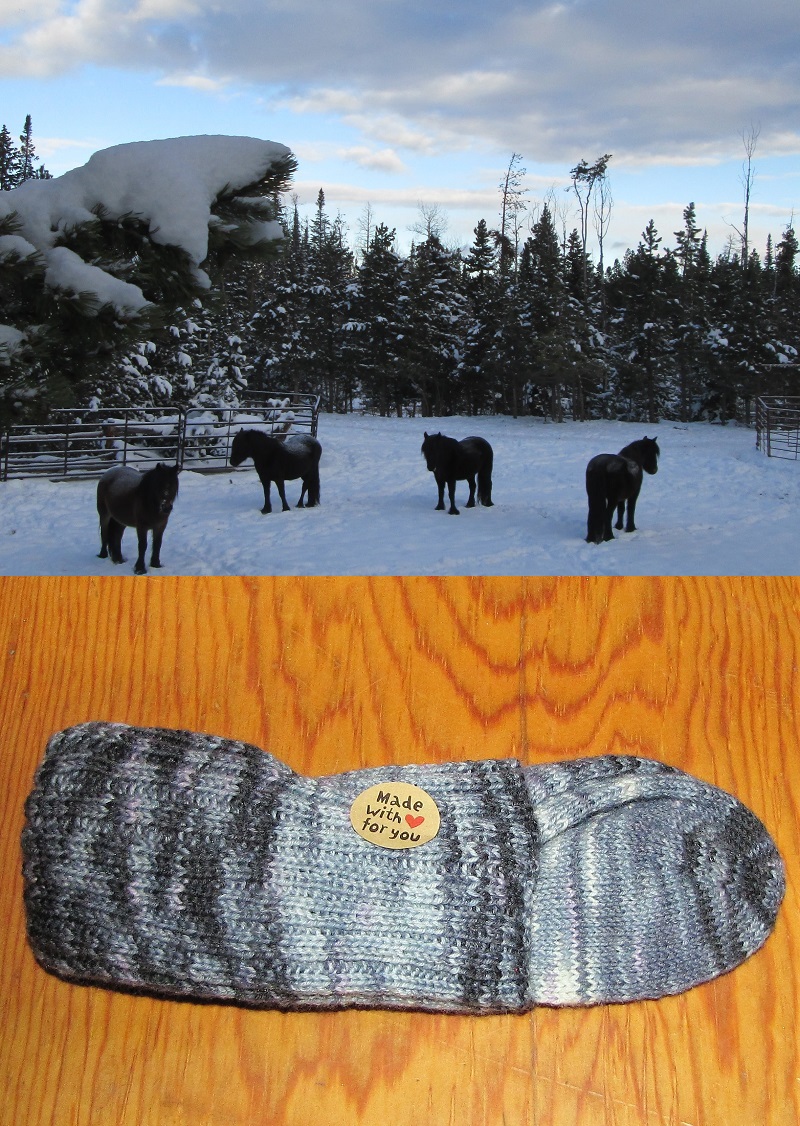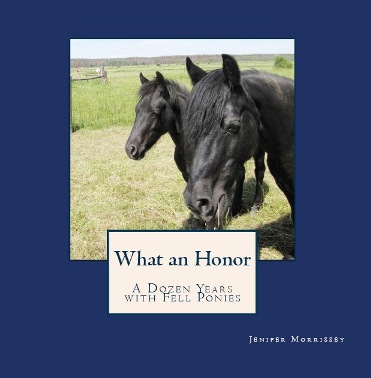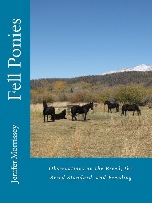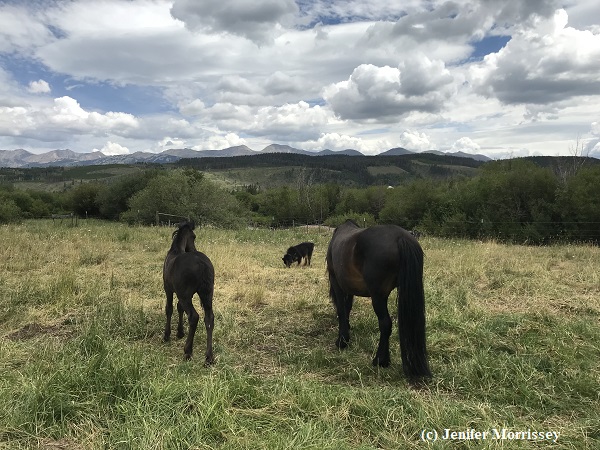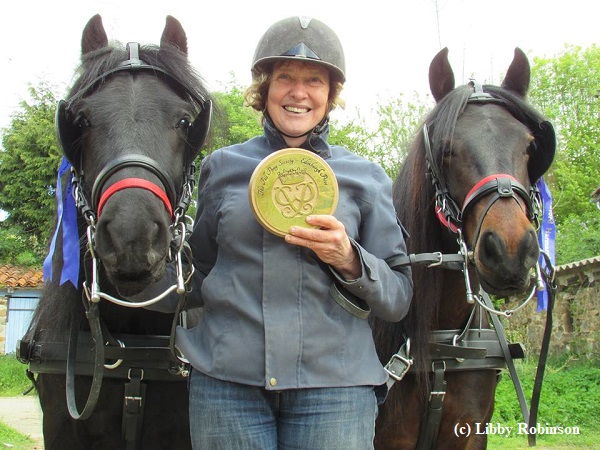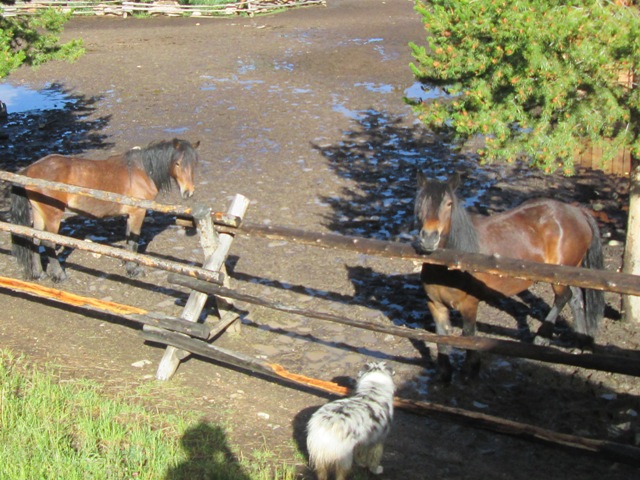I try to introduce new experiences in a controlled manner as much as possible to let Lucky Joe go from success to success. Control is of course a matter of degree. I live in a forest where it’s always a possibility for a chipmunk or a fox or a deer or a moose to suddenly emerge into view. I ride in their paddock first because I figure Lucky Joe is accustomed to the disruptions that occur there. Out on the driveway is where things get less predictable. And then I always have opportunities for trail rides where I need to trust my mount even more for my own safety. So I control what I can and show up each day to see how things go. At least that’s been my plan. Then one day my best laid plans blew up. The good news was that Lucky Joe didn’t; he took the disruption in our calm, slowly progressive routine right in stride!
From the outset of our current training routine, it was clear that Lucky Joe is as he’s always been: the easiest Fell Pony to train I’ve ever had. It makes my program of building on successes incredibly rewarding when the successes are so easy to achieve.
One of the elements of my program with Lucky Joe that’s been different than with my other ponies has been dog management. Lucky Joe has exhibited aggression towards my dogs at feeding time, so when I began doing ridden work with him, I made sure the dogs were tied well away from the paddock fences so they wouldn’t attract Lucky Joe’s attention while we were working. After a number of sessions when I finally felt I knew him well enough in the variety of circumstances we’d had together, I decided it was time to try a session with the dogs loose. I gave the dogs bones to chew on so they would be focused on something besides what I was doing, and I set off with Lucky Joe around the paddock to make sure his mind was where I thought it was. That’s when my best laid plans showed their flaws.
I hadn’t anticipated my husband arriving home just as I started to ride. The dogs joyfully greeted him and jumped in his truck and went up to the house with him. Okay, I thought, we’ll do the ‘dogs loose’ test that I had in mind another day. Lucky Joe was in good form, so I took him out onto the driveway and rode up towards the house a ways before turning around to go the other direction. All seemed to be going well when suddenly Lucky Joe spooked, going from walk to canter in an instant. It turned out that, unbeknownst to me, the dogs were running full speed down the driveway towards us from behind. Lucky Joe was as surprised as I was. Apparently, though, I had taught Lucky Joe the emergency brake, and I learned at that moment that he knew what it meant because after just a few strides he came back down to a walk, and after a few minutes with the dogs cavorting around us, he was as calm as ever.
Okay, I thought, I guess we’ll do a ride with the dogs after all. We continued down the driveway, and the dogs went off into the woods somewhere, so it was just me and Lucky Joe again. All was going well, and then the second unexpected circumstance presented itself with, thankfully, equally inconsequential results. Lucky Joe had seen deer and moose and fox and chipmunk and probably even bear and elk, but that day we saw something I’ve rarely seen around our house: a grouse. It was scooting along underneath the trees in its normal manner but it’s a manner unlike any other animal in the forest. I was surprised to see it, but Lucky Joe just glanced in its direction and continued to be a good trail mount. Once again, I thought, so much for best laid plans. But again I’d learned more about how well suited Lucky Joe is as a trail pony.
I was emboldened by all those successes with Lucky Joe that day, even though the lessons were unplanned. So I began taking trail rides with the dogs loose. Lucky Joe didn’t show any concern about the dogs accompanying us, so I concluded his aggressive behavior towards them was just around his feeding time.
The previous summer I had done a number of trails with Lucky Joe and Torrin. preparing them for paid employment packing gravel, so the first several trail rides we did were on routes Lucky Joe already knew, mostly walking, some trotting. Those went so well that one day I decided to try a route that he’d never been on. I hadn’t been on it for a long time, either, and it turned out there were numerous logs over the trail, but Lucky Joe maneuvered over and around them well. Then when we rounded a corner, we encountered a small herd of deer. Okay, I thought, here’s a good test: new surroundings with new ‘company.’ The deer moved off calmly and Lucky Joe followed suit, continuing on the path I indicated without any sign of concern.
Because of an unexpected tour through the emergency room and operating room, I’ve had to take a break from riding Lucky Joe. When I was finally well enough to start feeding ponies again, Lucky Joe greeted me at the gate when I appeared, looking expectantly for the bareback pad and halter and lead rope. It nearly broke my heart to tell him ‘Not today, buddy.” I look forward to our next riding session. I fully expect him to be just as he was when we left off, ready and willing to go out into the woods to see what is there. I think I’m the lucky one!
© Jenifer Morrissey, 2018
